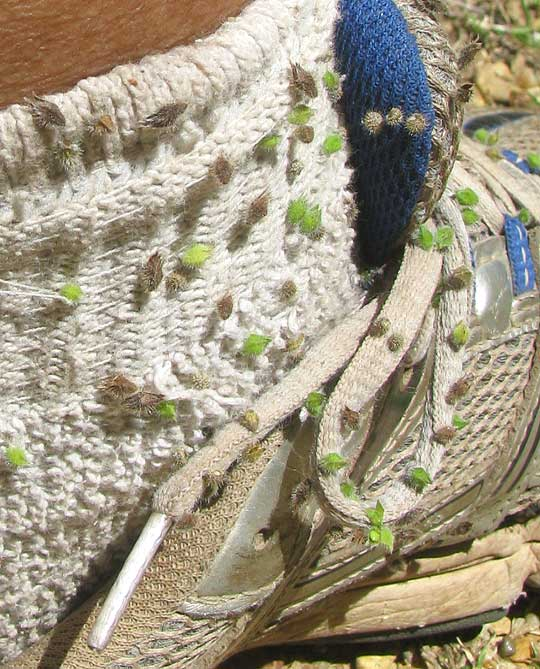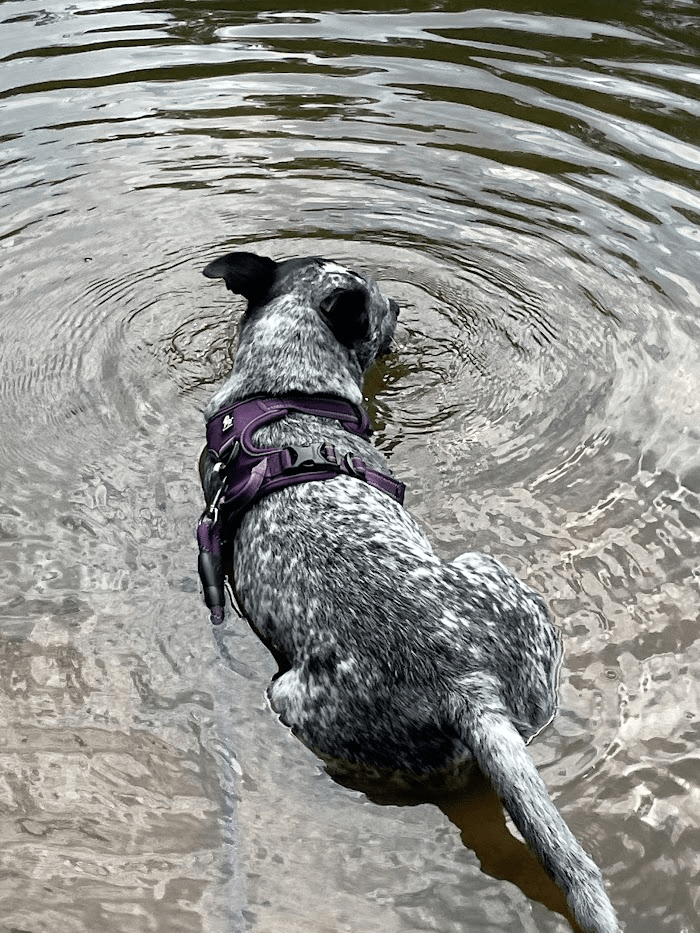“Sometimes it looks like I’m dancing, but it’s just that I walked into a spider web.” ~ Demetri Martin
The thermometer and calendar lie. Are we at the end of summer or the beginning of fall? Labor Day is in our rear view, but it is still early September and hot and humid. There is a hint of fall in the foothills of the Blue Ridge and a whisper of what will come in the morning breeze. There are harbingers that say Autumn is just around the next leaf strewn curve.
I thought of the harbingers as I picked Beggar’s Lice off Quigley. Little triangular seed pods that lie in wait in the late summer or early fall for some unsuspecting souls, as in Quigley and his favorite humans, to walk by. They are sticky, adhering to a puppy’s fir or a human’s shoelaces and socks. It is how the plants migrate, being carried from hither to yon by some accommodating animal.
They are harbingers, not as ooh or aah worthy as say, a vee of geese flying south for the winter or the Blue Heron that stops off at the lake for a bit of R and R before heading to swamps and shorelines to our south. But they are harbingers just the same.
Picking the Beggar’s lice off my shoestrings and Quigley’s coat, I thought of earlier Autumns in and around the cornfields of my childhood home. Picking and shucking dried ears of corn. The kernels removed from the cob would be ground into corn meal and grits, the cobs ground into hog feed. Nothing wasted.
In and around the fields were other plants, cockleburs, we called them. Usually, cocklebur was preceded by descriptive adjectives that had I been overheard using would lead to a “whoopin’” or a mouth filled with soap. Mostly I just sinned in my mind as I pricked my fingers.
Inch long, spiny seed pods that didn’t just stick to clothing or fur but grabbed ‘aholt’ and held on for dear life. Spiny enough to pierce bare skin, they were almost impossible to safely remove from boot laces and socks and why we wore denim in those fields. Painful harbingers of fall.
As Quigley, my bride, and I made our way around Lake Lookup I noted purple and yellow fall wildflowers, purple American beauty berry, fallen acorns and hickory nuts, and the scarlet Cardinal plant that grows in the marsh. I should have paid better attention, walking into the first spiderweb of the day.
This is the time that yellow and black writing spiders and orb weavers build their webs and I had just destroyed an orb weaver’s hard work. Quigley watched stupefied as I danced away attempting to remove the silky web…only to walk into another.
I had the uncomfortable thought that I was going to end up like David Hedison in the 1958 movie, The Fly, trapped in a web screaming “Help me, help me!” as a spider advanced toward me. I also wished Quigley were a bit taller or that my bride might walk ahead of me.
I don’t have a fear of spiders but spider webs across the face are an uncomfortable feeling and I walked into a dozen before my hike was over. The good news is they will be reconstructed before I begin my next walk. Good for the spider, not good for me.
My figs have ripened and been picked as have the muscadines. The smell of them cooking down for jellies and jams fills the kitchen with a delightful aroma. Did I mention the black walnuts are falling like bombs?
Soon the produce stands around my little piece of heaven will transition from peaches and apples to pumpkins. Pumpkin spice is already available at local coffee shops and Blue Moon is offering their Winter Pumpkin Ale. Not all harbingers are good.
Don Miller’s most recent release is “Pig Trails and Rabbit Holes” and may be downloaded or purchased in paperback at https://www.amazon.com/Don-Miller/e/B018IT38GM?fbclid=IwAR1PhzBApVfH1AYmpXdi6sDbZWknrqQT5u9DSgvUR2f_uF0Od9ApcLIu1BE




